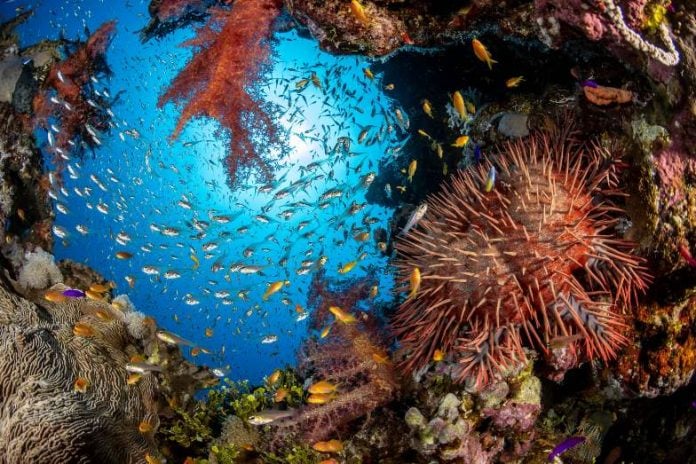Climate change and human activities are causing the health of oceans to decline at an alarming rate. From the acidification of waters to pollution, oceans are faced with a multitude of threats which endanger both nature and humans.
From June 27 to July 1, the international community will gather for the UN Ocean Conference in Lisbon.
NGOs are calling for a global goal of protecting at least 30% of marine habitats by 2030, with an emphasis on the “strong protection” of ecosystems, where any activity harmful to the environment would be prohibited.
Covering 70% of the planet, oceans provide us with oxygen and food. They regulate the climate, and are home to 80% of life on Earth.
Oceans are becoming warmer, more acidic, and contain less oxygen. Sea levels are also rising. Combined with the impacts of overfishing, pollution, and habitat destruction, this is leading to marine biodiversity loss.
Pollution
Today, plastic accounts for 85% of marine litter, putting all marine life at serious risk.
Cigarette butts, which are mainly composed of microplastics, are the most common plastic litter found on beaches. When ingested, the hazardous chemicals cause long-term mortality in marine life.
These microplastics also enter the food chain and are associated with serious human health impacts, which can include changes to genetics, brain development, respiration rates and more.
A drastic reduction in unnecessary plastic is crucial to solving the global pollution crisis, according to the UN Environment Programme (UNEP).
Chemical pollution is also a concern. Oil and other harmful liquid substances, fertilisers and pesticides, as well as sunscreens and pharmaceutical waste, cause developmental abnormalities, weakened immune response and reduced fertility in aquatic species.
Overfishing
Intensive fishing is a major threat because it depletes resources and destabilises ecosystems. However, this practice continues to be heavily subsidised by governments.
According to the Food and Agriculture Organization of the United Nations (FAO), over a third of fish stocks around the world are being overfished.
Overfishing also causes harm to the seabed, particularly through the use of vast nets towed by ships along the seafloor.
Today, only 2.8% of the ocean’s surface is so far protected from the effects of fishing.
Ecosystem degradation
Each year, the oceans absorb 23% of human-caused carbon dioxide (CO2) emissions and capture 90% of the excess heat created by these emissions.
Due to global warming and human activities, temperatures are rising rapidly, and the oceans are overwhelmed.
Waters are becoming more acidic, increasing the number of “dead zones” which are deserted by wildlife fleeing suffocation.
Global warming and pollution lead to the spread of viruses and bacteria, as well as an increase in harmful algae that have an impact on aquatic fauna, but also humans.
The diversification of human activities in the oceans, particularly in terms of energy production and mining, also poses new challenges for the conservation of marine life.
Around 6% of assessed fish are threatened or near threatened with extinction, according to the International Union for Conservation of Nature (IUCN).
If we continue on this path, more than half of the world’s marine species could be on the verge of extinction by 2100.
UN Ocean Conference
To take action, the upcoming UN Ocean Conference aims to provide scientific solutions for sustainably managed oceans, such as green technology and the innovative use of marine resources.
The conference aims to address threats to the ocean’s health, ecology, the economy, acidification, pollution, illegal fishing, and habitat and biodiversity loss.
More information

